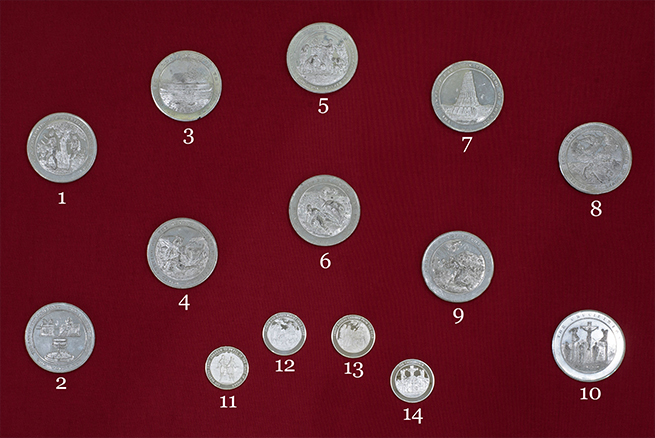
The Thomason Medallic Bible is a set of sixty medals struck in 1830 that celebrates the Bible in medallic art. Sir Edward Thomason (1769-1849), an industrialist, exporter and inventor felt divinely inspired to create the medals to “promote the glory of God by impressing the Word of God upon gold, silver and other indestructible metals.” Each medal has a Bible scene inspired by Renaissance artists with text explaining the scene. Produced in England in gilt copper or white metal, the set sold widely to religious audiences.
During the 18th – 19th centuries, Europe and America experienced a series of Protestant revivals known as the “Great Awakening.” American ministers played a major role in these movements, including Jonathan Edwards (1703-1758) during the First Great Awakening of the 1730s and 1740s. The Second Great Awakening (ca. 1795-1845) inspired a new wave of evangelical revivalism which profoundly influenced Protestants, especially Methodists and Baptists. It inspired movements intended to cure the evils of society in preparation for the Second Coming of Jesus Christ. Traveling ministers in the United States tied religion to patriotism and national identity in revivals held
throughout the early American Republic on the eve of the Civil War.
Revivals were not limited to the U.S. – they were popular Britain and Germany as well. They reflected the ideals of Romanticism characterized by passion and emotion. The rationalism and deism of the Enlightenment were rejected, replaced by vibrant and vocal emotionalism. Revivals gained millions of converts for existing evangelical denominations and led to the formation of new ones. These medals reflect that tumultuous time.

